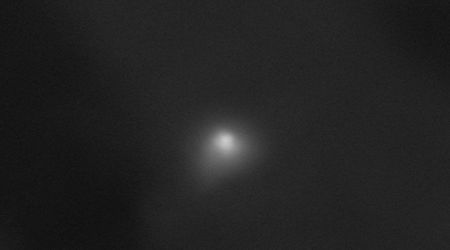Following consecutive Starship mishaps, SpaceX prepares for 9th test flight with extended 'static fire' test

SpaceX continues to prepare for the ninth test flight of its Starship megarocket, as it performed a long-duration "static fire" test. It was conducted on May 12, 2025, where the team ignited all six of the 171-foot-tall vehicle's Raptor engines, as per Space.com. The test took place at the Starbase launch site in South Texas, which was bustling with the work of being an official town. The ignition lasted for 60 seconds, and it was the third static fire test for the specific vehicle, which "is undergoing final preparations for the ninth flight test," according to a post on X by SpaceX. Along with this, company founder Elon Musk has also announced the tentative timeline of the test flight, which is "not earlier than May 21."

A static fire with the first-stage booster lined up for the mission launch had already been conducted. With previous discrepancies, Starship has completed right test flights till now, two of which took place this year. The 2025 flights happened in January and March, with the same problems to be tackled with post-flight. The Super Heavy booster returned to Starbase and was successfully caught by the launch tower, though the Ship's upper stage faced trouble both the times.
Starship completed a long duration six-engine static fire and is undergoing final preparations for the ninth flight test pic.twitter.com/o3WWjwtFre
— SpaceX (@SpaceX) May 13, 2025
The Starship upper stage underwent some issues during the launch, which resulted in its explosion less than 10 minutes into the flight. The vehicle is 403.5 feet tall once completely arranged and is the biggest and most powerful rocket to be built. The Super Heavy booster and Starship upper stage are two elements created to be completely and rapidly reusable. The Mars dream of Elon Musk will be assisted by Starship, and will make the settlement cost-effective. As no issues were seen with the latest test, the long-duration Ship static fire looked to be a success.

Before this test with all six engines, a "static fire" test with the Flight 9 upper stage was done by igniting one engine. This test was also announced in a post on X that mentioned the engine in trial, "demonstrating an in-space burn." The Starship upper stage and the Super Heavy Booster are both powered by the Raptor engines, six engines for the former and a massive 33 for Super Heavy, as per Space.com. The tests might be careful calculations to prevent further explosions, as the Ship exploded within 10 minutes after liftoff of Flight 7 and Flight 8.
The Starship preparing for our ninth flight test completed a single engine static fire demonstrating an in-space burn pic.twitter.com/6ZvbIaZsTz
— SpaceX (@SpaceX) May 1, 2025
SpaceX had mentioned that Flight 7's Super Heavy would be reused for Flight 9. Maritime warnings along Starship's flight path over the Gulf of Mexico indicate a launch around May 21, as per ARS Technica. The launch window would open at 6:30 pm local time, and the Ship should fly halfway across the world in space, with a targeted reentry and controlled splashdown in the Indian Ocean. Successful tests indicated that SpaceX was in the final set of preparations for Starship's ninth full-scale test flight and hoped to bring the Starship program back on track.

The recent flight plans of SpaceX intended to conduct 25 Starship test flights this year, which were reviewed for approval. It was found that the flights would not pose any risk to the environment and detailed various factors would be considered before execution. However, it was possible that the company could fall short of its required number. The return of Starship from low-Earth orbit to the launch site and getting the tower to catch it is also part of its goals. It would be followed by testing an in-space refueling system to transfer liquid propellants between Starships in orbit.









